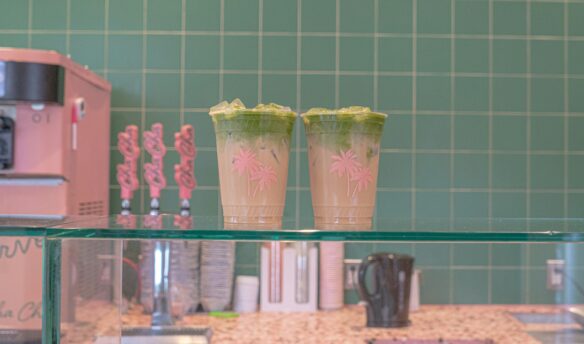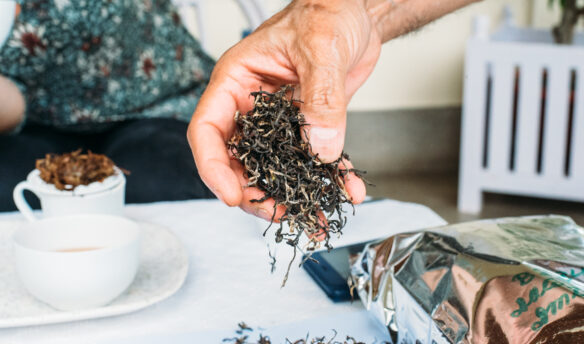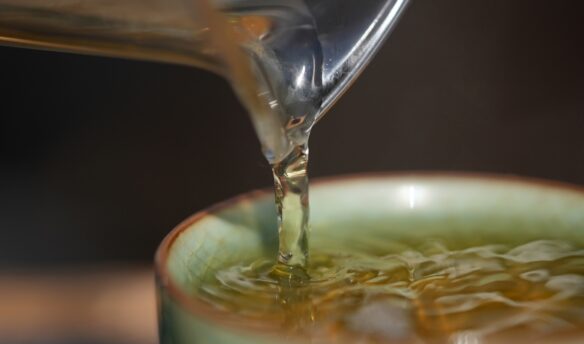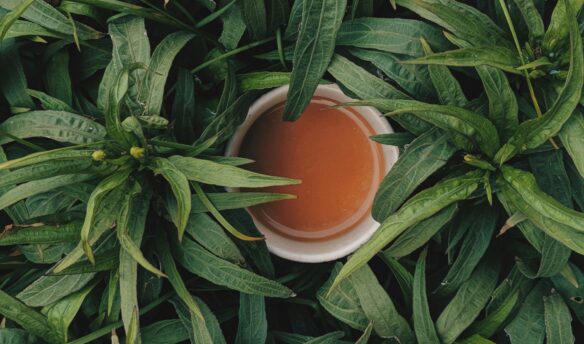In early 2020, a simple question about tea sent Bryn Mawr College chemistry professor and tea enthusiast Michelle Francl down a research rabbit hole.
“A friend posted a question on Twitter: ‘Does the shape of a tea bag make any difference? Should it be tetrahedral or what?’” says Francl. “I wondered what chemists know about tea. It turns out we knew a ton.”
When Francl looked into the matter, she was surprised by what she learned: The shape of the tea bag doesn’t matter much, but the size definitely does.
“Tea leaves expand by a factor of five,” she explains. “If you don’t have enough room for the tea to expand and the water to move around them, you won’t get good or consistent extraction. You really want a tea bag with a lot of empty space in it relative to the amount of leaves.”
Francl published her findings in the science journal “Nature Chemistry,” where she had a regular column. Not long after, it began attracting attention.“An editor for the Royal Society Press read it and asked me if I wanted to write a book,” says Francl.
Four years and a few thousand cups of tea later, Francl published “Steeped: The Chemistry of Tea” in 2024. The book explores the science of tea brewing, and offers insights into the reasons behind many best practices.
Frankl says she’s “been a tea-drinker my whole life, despite growing up in the Midwest where everyone drinks coffee.” Writing the book was fun because she got to explore “all of the questions that I had had for years”
Right on Time
Throughout “Steeped,” Francl explains complex chemical concepts with a clarity and approachability that reveal her 40 years of classroom experience. She notes that a basic understanding of tea chemistry can help casual enthusiasts and hospitality professionals alike improve the quality of their tea.
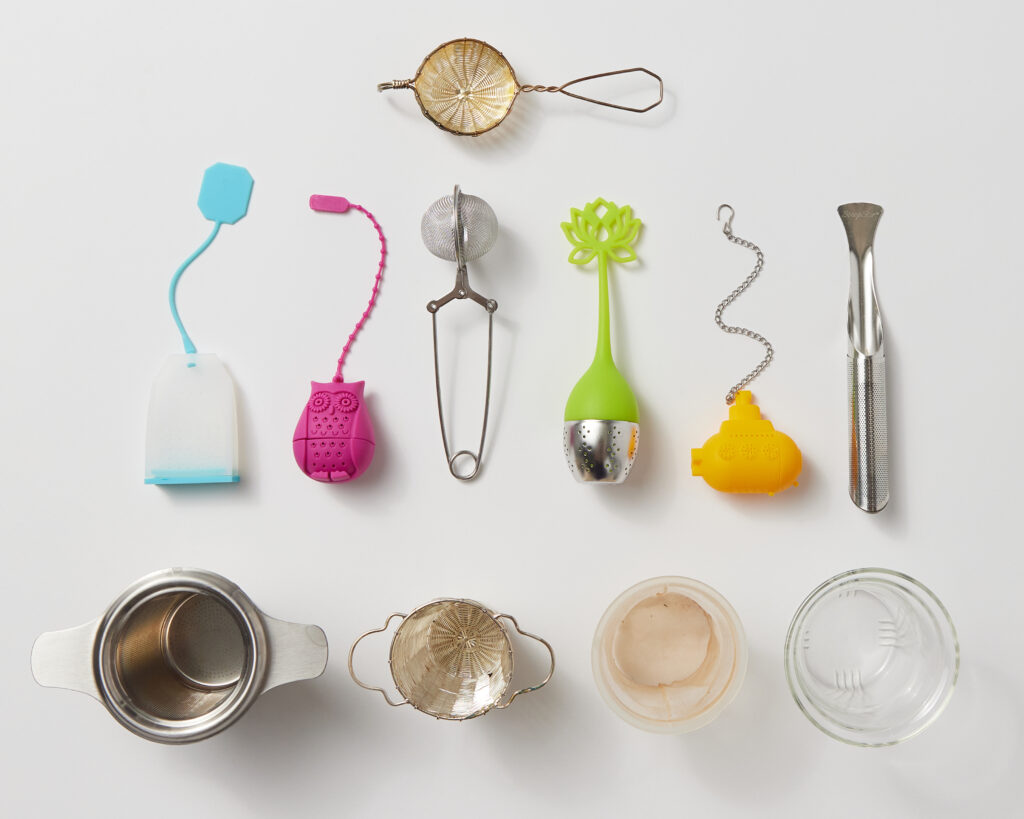
For example, chemistry explains why tea that has been steeped for too long tastes so astringent. “The bitter alkaloids, like caffeine and theobromine, come out pretty quickly,” Francl says. “The really astringent compounds, which also read to us as bitterness, start to come out over time. The longer you let it go, the more astringent it becomes. Then it becomes, at least for me, undrinkable.”
In addition to steeping time, Francl notes that a tea’s flavor profile is also strongly affected by temperature. Her book explains that black and green teas, for instance, should be prepared at different water temperatures because of their varying levels of oxidation (a process in which exposure to oxygen changes the molecular composition of the tea leaf).
In the case of oxidized teas, like black tea or oolong, “You have to use a higher temperature. Once they’re oxidized, they’re less soluble,” says Francl.
Conversely, less oxidized green tea has higher levels of polyphenols and other antioxidants, which can have an astringent taste. Using a lower water temperature and shorter steeping time keeps these bitter flavor compounds in balance with the rest of the brew.
“When you use a lower temperature, you get less alkaloids, so it will taste smoother and less bitter,” Francl says.
Uppers and Downers
Chemistry can also help explain the calming effects of tea. Although tea contains a significant amount of caffeine, many drinkers do not experience the same jitteriness that they encounter with coffee. This is likely due to a chemical that’s present in tea but is not found in coffee: L-theanine.
“L-theanine is an amino acid made by tea. It’s one of the very few plants that make it,” says Francl. “Some amino acids taste sweet, some more umami. They can add something to the flavor, but they also have physiological effects.”
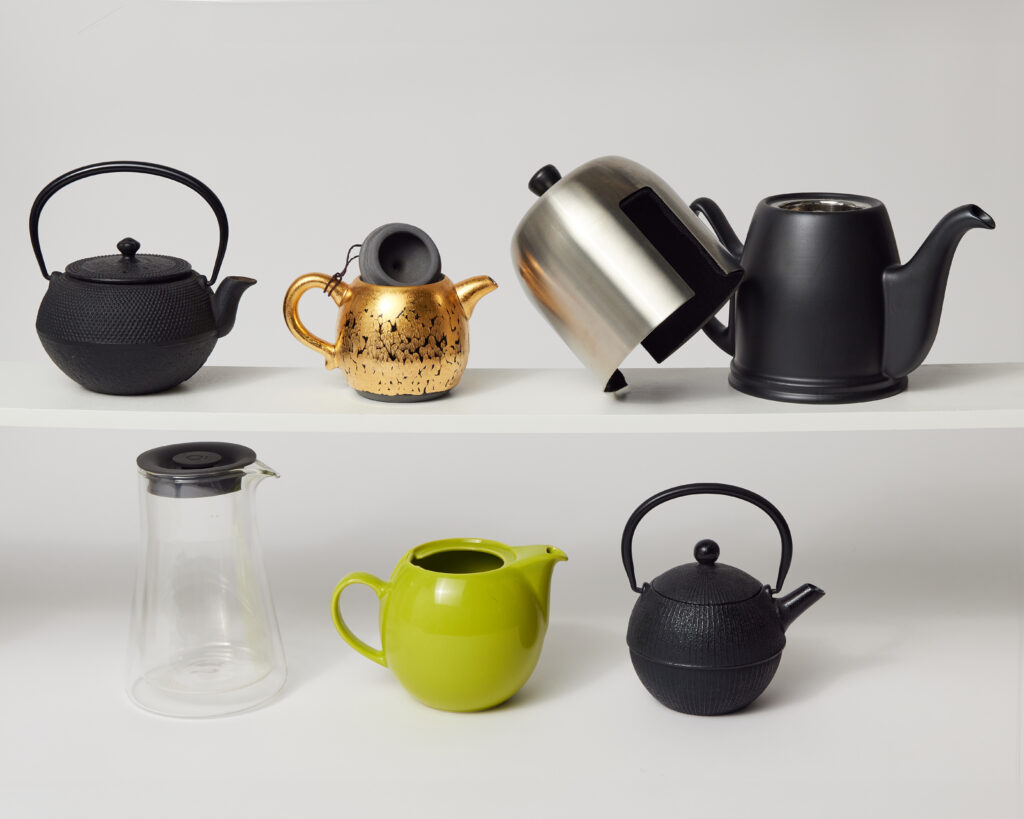
In the case of L-theanine, those effects are very calming. “It’s been shown to reduce subclinical anxiety,” says Francl. “If you’re somewhat anxious and having a bad afternoon, L-theanine has been shown to reduce that anxiety. That can help offset the hype from the caffeine.”
It’s in the Bag
Francl never anticipated that an offhand question about tea bag shapes would lead her on such a journey. But the process has been rewarding—and has also impacted her own tea-drinking habits.
Today, for instance, she eschews tea bags altogether. “I’m loose-leaf all the way. I haven’t used a tea bag in a long time, except in desperation,” says Francl. “I have a giant infusion basket. The more space the leaves have to move around the better.”
Ultimately, Francl hopes her research will help tea drinkers find more enjoyment from their daily cup, as it already has for her—whether they change their brewing methods or just grow more attentive to the cup in front of them.
“Some of the same compounds as roses appear in black tea,” says Francl. “I appreciate the aroma of the tea more now that I know what compounds are coming out. I imagine I can smell the roses.”
Cover photo courtesy of Bryn Mawr College












